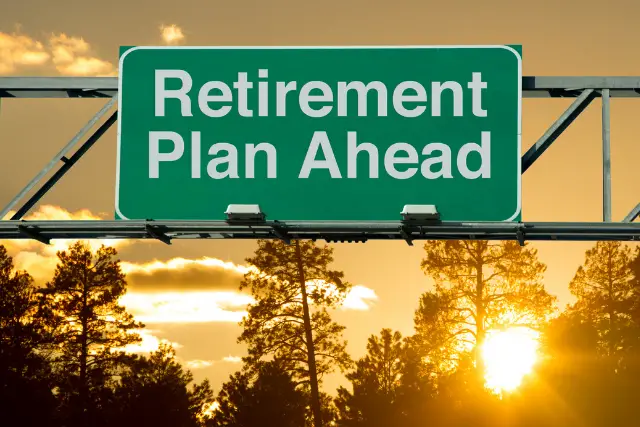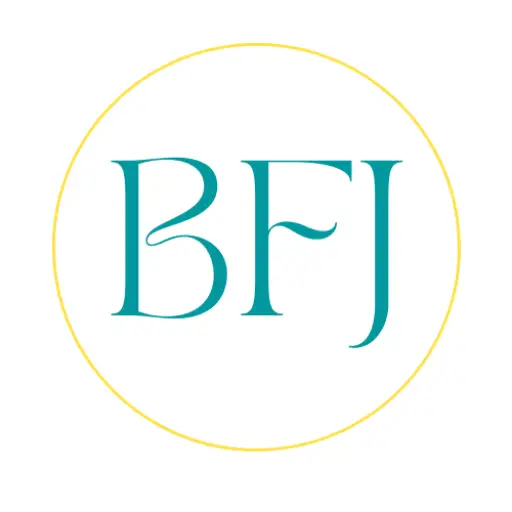If you are self-employed, it is important to have a retirement plan in place. Many options are available, and it can be difficult to decide which is the best for you. This article will discuss the five best retirement plan options for the self-employed.
According to FORBES, Nearly 30% of Americans are self-employed. So knowing which retirement plan options are available and best is very important.
We will go over each one in detail and explain how they work exactly.
So, whether you are just starting as a self-employed individual or have been self-employed for a while, read on to find out about the best retirement plan options!
This post may contain affiliate links; please see our disclaimer for details.

Table of Contents
1. Traditional or Roth IRA (Individual Retirement Arrangement)
For the self-employed, there are two types of IRAs to choose from – the traditional IRA and the Roth IRA.
With a traditional IRA, you make contributions with pre-tax dollars and pay taxes when you withdraw it in retirement.
With a Roth IRA, you contribute with after-tax dollars, and your withdrawals are tax-free in retirement.
Both have their own benefits and drawbacks. For example, the traditional IRA offers an immediate tax deduction for your contributions, while the Roth doesn’t. But the Roth grows tax-free, and you don’t have to pay taxes on withdrawals in retirement.
As of 2022, you can contribute up to $6000 per year to an IRA (or $7000 if you’re over 50).
Another advantage for a self-employed individual is that you can set up an IRA with any financial institution, including a brokerage firm, bank, or mutual fund company.
It may not be the best for self-employed individuals with a high income since other retirement plans may offer more tax advantages. But it’s still a solid choice for many people.
A few things to keep in mind when choosing an IRA
- Consider whether you want the immediate tax deduction of a traditional IRA or the tax-free growth and withdrawals of a Roth IRA.
- Make sure you choose a reputable IRA provider with low fees.
- Remember that you can always rollover your IRA into a different type of retirement account if you change your mind later on.
2. Solo 401(k)
This retirement plan is ideal for business owners with no full-time employees. You can contribute up to $61,000 in 2022 (or $67,500 if you’re age 50 or older). You’ll also enjoy some tax benefits come retirement time.
With a Solo 401(k), you won’t have to pay taxes on the money you withdraw, BUT it must be a qualifying distribution. This type of withdrawal includes using the funds to cover certain medical expenses, buying a first home, or paying off debt after age 59½.
The solo 401(k) also has two options for how you can invest your money: a traditional 401(k) or a Roth 401(k).
The traditional 401(k) allows you to make contributions with pretax dollars, which lowers your current taxable income. When you retire and begin taking distributions, those withdrawals are taxable income.
With a Roth 401(k), you contribute with after-tax dollars. This means you won’t get a tax break on your contributions now, but your withdrawals in retirement will be tax-free.
If you’re self-employed, a solo 401(k) is one of your best retirement plans. However, it is important to reiterate that to be eligible; you have to have no employees.
If you answer “Yes” to the following questions, a solo 401(k) may be best for you:
- Do you have a business with no full-time employees?
- Are you looking for a retirement plan with high contribution limits?
- Do you want the option to make both Roth and traditional 401(k) contributions?
If you answered “Yes” to all of the above, then a solo 401(k) is an option you can consider for your self-employed business.
3. Simplified Employee Pension IRA (or SEP IRA)
This is probably the most common retirement plan for small business owners and the self-employed. It’s an IRA that you, as the employer, contribute to on behalf of your employees (including yourself).
The contribution limits are higher with a SEP IRA than with a traditional or Roth IRA—for 2022, the limit is $61,000 per person.
SEP IRAs are easy to set up and maintain, which makes them a popular choice for small business owners. And like other IRAs, they offer employer contributions. You can receive a tax deduction by being both the employer and employee.
There are a few downsides to SEP IRAs. First, a $650 compensation is the minimum requirement. It can be ignored if the business is struggling. That minimum limit can help you stay consistent, but it could also take your focus away from reinvesting in the business.
You will also have to be at least 21 years of age and employed in your business for three years.
Overall, a SEP IRA is a good choice for business owners and the self-employed. This could be the one for you if you’re looking for an easy retirement plan with employer contributions and tax deductions.
If you answer “Yes” to the following questions, a SEP IRA may be best for you:
- Do you have a business with no full-time employees?
- Are you looking for a retirement plan with high contribution limits?
- Can you make the $650 compensation limit?
- Are you looking for an easy retirement plan to set up and maintain?
If you answered “Yes” to all of the above, then a SEP IRA is an option you can consider for your self-employed business.
4. Savings Incentive Match Plan for Employees IRA (or SIMPLE IRA)
This is another great retirement savings option for the self-employed. They are available to any small company, except those with more than 100 staff. As the name suggests, they are quite simple and inexpensive to create and maintain.
They do, however, have lower contribution limits than other retirement programs.
The main disadvantage is that if the employer has other retirement plans, they will be eligible for this retirement plan. If you already have a retirement plan, this may not be your best option.
Employees are not required to contribute each year. However, as the employer, a yearly contribution is mandatory. The Employer has two options when contributing:
- Match up to 3% of contributions (not subject to the annual compensation cap).
- Contribute 2% to each eligible employee. (non-elective)
Non-elective means that the employer must still contribute even if the employee does not. This can be a major bonus for employees who are not able to contribute on their own.
The first option can be beneficial if you have employees that are not highly compensated. The second option is more beneficial if you have the most highly compensated employees. This is a great retirement savings option for small business owners!
Example of how this account would work with option 1
Bobby works for a small company that offers a SIMPLE IRA. Bobby is age and makes $35,000 per year. The employer matches the employee with option #1 (match up to 3% of contributions). Bobby contributes $10,000 to his SIMPLE IRA. The employer then contributes $1050 (3% of Bobby’s yearly salary) to Bobby’s SIMPLE IRA. At the end of the year, Bobby has $11,050 in his SIMPLE IRA.
Example of how this account would work with option 2
Susan earned $35,000 and chooses not to contribute anything to her SIMPLE IRA. However, the company has selected option 2 for their employer contribution (contribute $700 per year or two percent of each eligible employee’s salary). Therefore, Susan still receives $700 from her employer at the end of the year, even though she did not contribute anything herself.
The employer contributions can really add up over time! If you are self-employed, this is a great retirement saving option. You can consider this type of retirement account for yourself and your employees when you do not have any other retirement accounts.
If you can contribute to employees’ accounts without jeopardizing your business, this may be a great option for you!
5. Health Savings Account (HSA)
This last option is meant for a type of retirement saver: the health-conscious individual with a high deductible health plan. If this describes you, an HSA could be a great way to save for your future.
The HSA enables small business owners to deduct 100% of their family’s health and dental expenses. These two expenses can add up, especially if you have a family.
To qualify for an HSA, you must have a high deductible health care plan (HDHP). For 2022, an HDHP is defined as any plan with a deductible of $1400 or more for an individual or $2800 or more for a family.
If you meet these requirements, you can open and contribute to an HSA. Contributions are made with pretax dollars and grow tax-deferred. Withdrawals for qualified medical expenses are tax-free.
One of the great things about an HSA is that it can be used in conjunction with other retirement accounts.
For example, you could contribute to your HSA up to the limit and then invest the money in a mutual fund within the account. This would allow you to grow your money tax-deferred AND have access to it if you need it for qualified medical expenses.
HSAs are a great way to save on healthcare costs in retirement. If you are eligible, take advantage of this retirement-saving option!
Conclusion

As a self-employed individual, you have a lot of retirement plan options available to you. It can be tough to decide which one is right for you, but hopefully, this article has given you a better idea of the best retirement plan options for the self-employed.
Remember, the best retirement plan is the one that meets your specific needs. Consider your age, income, retirement goals, and investment preferences when choosing a plan.
Some of these options have certain requirements; if you don’t meet them, another retirement plan might be a better fit.
If you’re still unsure which retirement plan is best for you, seek help from a financial advisor and a tax professional. They can help you understand your options and make the best decision for your unique situation.
What’s most important is that you start saving for retirement now. The sooner you start, the more time your money has to grow.
So don’t delay – find a retirement plan that works for you and start saving today!
Disclaimer:
We hope the information in this article provides valuable insights to every reader but we, the Biesingers, are not financial advisors. When making your personal finance decisions, research multiple sources and/or receive advice from a licensed professional. As always, we wish you the best in your pursuit of financial independence!

